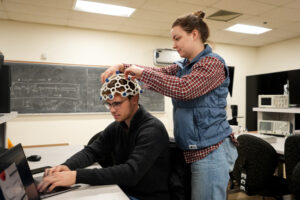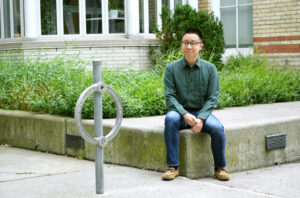
AUGUST 7, 2024 • By Matthew Tierney
Professor Ervin Sejdić is teaming up with Professor Yana Yunusova of the Department of Speech-Language Pathology to develop video-based face-tracking technology, powered by AI, for cranial nerve exams (CNEs). They recently received funding from the New Frontiers in Research Fund for their project.
A diagnosis of neurological diseases usually involves evaluating the body’s motor and sensory functions. While progress has been made in digitally assessing gait, balance, posture and limb functions, one area remains challenging: mouth and tongue structures. These are crucial, since tongue evaluation plays a key role in diagnosing conditions like stroke, tumors and other neurodegenerative diseases.
To track tongue movements, Yunusova and Sejdić will train novel algorithms using data collected during the development of a digital CNE. These algorithms will be validated against neurotypical adults using electromagnetic articulography, a procedure which uses sensors on the tongue to measure position and movement.
The team will use their AI model for a video-based assessment of patients with neuromuscular disorders, or who have had a stroke or amyotrophic lateral sclerosis (ALS), and then compare their results to those obtained through traditional CNE by neurologists, accounting for a wide range of age, sex/gender, racial and anatomic factors.
The goal is to create a digital tool that is widely available for clinical and research purposes.
“Digital technologies have massive potential to transform clinical decision-making,” says Yunusova. “An automatic digital assessment tool will add efficiencies to the detection of neurological diseases and may help clinicians achieve a more accurate diagnosis. And because it can be used remotely, it will reach patients who can’t easily travel.”
“As the population ages, so do age-related neurological diseases,” says Sejdić. “There is a shortage of specialized neurologists and clinicians to address the shift, which puts a strain on our healthcare system. AI tools can work together with medical experts to ease this burden.”


